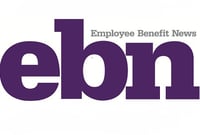Consolidation Corner
-
Blog
- 401k Cash Outs
- 401k Consolidation
- 401k Plan Termination
- America's Mobile Workforce
- Assisted Roll-in
- Auto Enrollment
- Auto Portability
- Auto Portability Simulation
- Automatic Roll-In
- Automatic Rollover
- Automatic Rollovers
- Boston Research Technologies
- CARES act
- Common Mistakes
- DIY Roll-In
- DOL Advisory Opinion
- EBRI
- Employee Benefit News
- ERISA Advisory Council
- Financial Services Roundtable
- Financial Wellness
- How-To
- In-Plan Consolidation
- Leakage
- Lifetime Plan Participation
- Lost Participants
- Managed Portability
- Mandatory Distributions
- MarketWatch
- Missing Participant IRA
- Missing Participants
- National Retirement Savings Cash Out Clock
- Participant Transition Management
- PLANSPONSOR
- Portability Services Network
- PSCA
- Public Policy
- RCH Services
- Retirement Income
- Retirement Plan Portability
- retirement research
- Retirement Savings Consolidation
- Retirement Savings Portability
- Roll-In
- Safe Harbor IRA
- Saver's Match
- Security
- Small Accounts
- Stale Dated Checks
- Synthetic Tenure
- Uncashed Check Services
- Uncashed Distribution Checks
- Video
- Webcast
- What is a Missing Participant?
401k Consolidation (6)
Consolidation Corner Blog
Consolidation Corner is the Retirement Clearinghouse (RCH) blog, and features the latest articles and bylines from our executives, addressing important retirement savings portability topics.
The Tragicomedy of Cashout Leakage
 I often write about the phenomenon of cashout leakage, which occurs when participants change jobs and prematurely withdraw their retirement savings, prior to normal retirement age.
I often write about the phenomenon of cashout leakage, which occurs when participants change jobs and prematurely withdraw their retirement savings, prior to normal retirement age.
Alight Solutions to Lead Nationwide Launch of Auto Portability
 In a press release issued Tuesday, July 14th, Retirement Clearinghouse (RCH) announced that Alight Solutions will lead the nationwide launch of the RCH Auto Portability program.
In a press release issued Tuesday, July 14th, Retirement Clearinghouse (RCH) announced that Alight Solutions will lead the nationwide launch of the RCH Auto Portability program.
Video: Is Auto Portability the Next 401(k) ‘ESG’ Initiative?

Three recent developments indicate that the retirement industry is waking up to the need to address 401(k) cashout leakage, and importantly – from within the framework of corporate social responsibility.
How Socially Responsible Corporations Will Solve the 401(k) Cashout Crisis
 Every year a silent, slow-motion train wreck occurs in America’s 401(k) system, when millions of job-changing workers prematurely cash out billions of dollars in retirement savings, a phenomenon known in retirement industry lingo as “cashout leakage."
Every year a silent, slow-motion train wreck occurs in America’s 401(k) system, when millions of job-changing workers prematurely cash out billions of dollars in retirement savings, a phenomenon known in retirement industry lingo as “cashout leakage."
The New Age of DC Plan Portability
 A recent survey of defined contribution (DC) plan sponsors found that interest in retaining assets for retirement is on the rise. That finding, paired with certain provisions of the SECURE Act of 2019, suggests that DC plans are on a path to becoming “decumulation vehicles” for American retirees. While these developments are encouraging, persistently high levels of cashout leakage, increasing missing participants and other factors produce understandable pessimism regarding the future of DC plans.
A recent survey of defined contribution (DC) plan sponsors found that interest in retaining assets for retirement is on the rise. That finding, paired with certain provisions of the SECURE Act of 2019, suggests that DC plans are on a path to becoming “decumulation vehicles” for American retirees. While these developments are encouraging, persistently high levels of cashout leakage, increasing missing participants and other factors produce understandable pessimism regarding the future of DC plans.
A Financial Wellness Program You Can Actually Measure
Although the financial wellness of employees has emerged as a top priority for employers in recent years, too many workers are still struggling to improve their financial health.
The Surprising Migratory Patterns of Job-Changing Participants
 Much has been written in the media, including this column, about the increase in mobility of today’s American workforce.
Much has been written in the media, including this column, about the increase in mobility of today’s American workforce.
The Auto Portability Imperative

An Important Milestone: The DOL Issues Final Prohibited Transaction Exemption for Auto Portability
 On July 31st, the U.S. Department of Labor (DOL) released the final Prohibited Transaction Exemption (PTE) to Retirement Clearinghouse (RCH) for the RCH Auto Portability program, completing the regulatory framework and clearing the way for auto portability’s widespread adoption.
On July 31st, the U.S. Department of Labor (DOL) released the final Prohibited Transaction Exemption (PTE) to Retirement Clearinghouse (RCH) for the RCH Auto Portability program, completing the regulatory framework and clearing the way for auto portability’s widespread adoption.
This new development represents an important milestone on the path to auto portability, a private-sector innovation that will help prevent 401(k) cashout leakage, increase plan efficiencies and improve the prospects of a timely, comfortable and secure retirement for millions of Americans.
What’s Missing from the SECURE Act? A Provision to Plug Cash-Out Leakage

The Setting Every Community Up for Retirement Enhancement (SECURE) Act of 2019, passed by the House of Representatives on May 23, has the potential to make a positive impact on Americans’ retirement readiness. One of the bill’s key provisions involves removing restrictions on open multiple employer plans (MEPs), which would make it less costly for small businesses to offer retirement savings plans to employees.
-
Blog
- 401k Cash Outs
- 401k Consolidation
- 401k Plan Termination
- America's Mobile Workforce
- Assisted Roll-in
- Auto Enrollment
- Auto Portability
- Auto Portability Simulation
- Automatic Roll-In
- Automatic Rollover
- Automatic Rollovers
- Boston Research Technologies
- CARES act
- Common Mistakes
- DIY Roll-In
- DOL Advisory Opinion
- EBRI
- Employee Benefit News
- ERISA Advisory Council
- Financial Services Roundtable
- Financial Wellness
- How-To
- In-Plan Consolidation
- Leakage
- Lifetime Plan Participation
- Lost Participants
- Managed Portability
- Mandatory Distributions
- MarketWatch
- Missing Participant IRA
- Missing Participants
- National Retirement Savings Cash Out Clock
- Participant Transition Management
- PLANSPONSOR
- Portability Services Network
- PSCA
- Public Policy
- RCH Services
- Retirement Income
- Retirement Plan Portability
- retirement research
- Retirement Savings Consolidation
- Retirement Savings Portability
- Roll-In
- Safe Harbor IRA
- Saver's Match
- Security
- Small Accounts
- Stale Dated Checks
- Synthetic Tenure
- Uncashed Check Services
- Uncashed Distribution Checks
- Video
- Webcast
- What is a Missing Participant?
